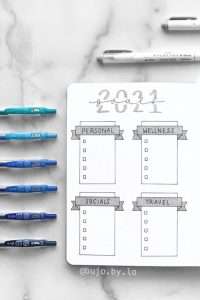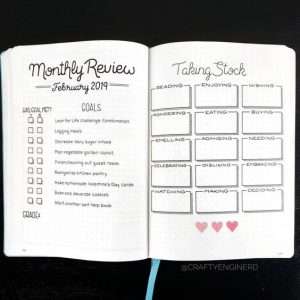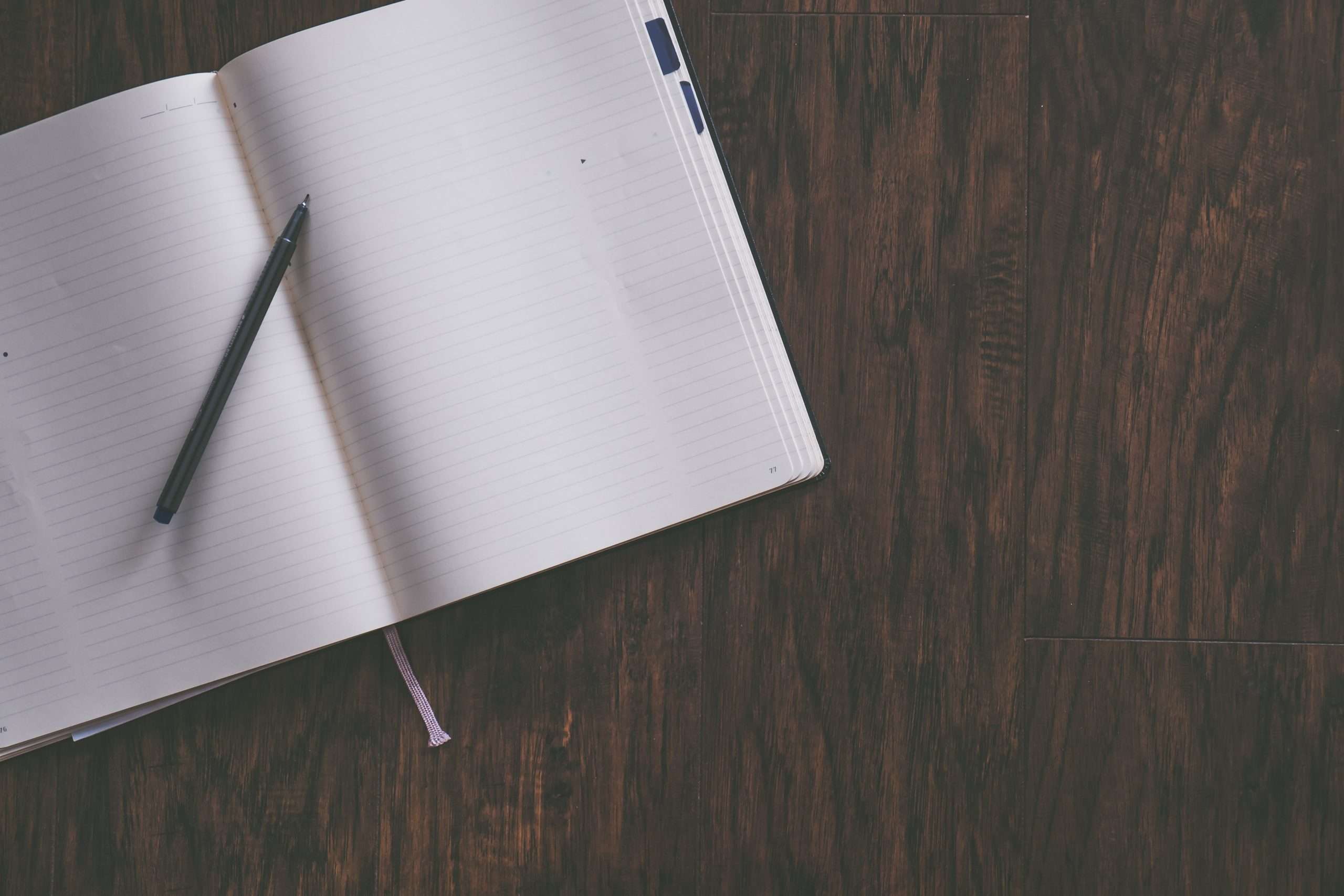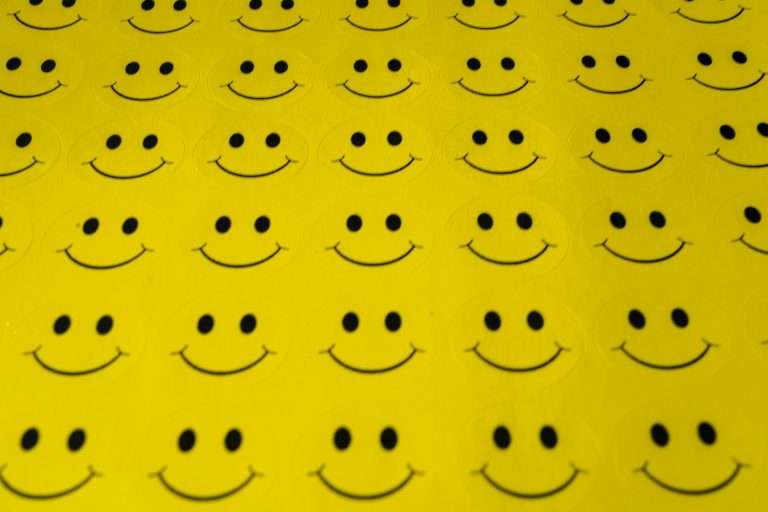Bullet journaling is an analog system designed to help you order and examine your days so that you can take control of your life. Your bullet journal is a sacred place, one shielded from technology, that can allow you to plan, reflect and learn.
The Bullet Journal method was created by Ryder Carroll and it was an instant success. It’s described as a “mindfulness practice disguised as a productivity system.”
The idea is simple: all you need is a journal and a well thought-out system to organize and keep track of your life. What goes in is entirely your choice, although most people include yearly goals, calendars (month-at-a-glance), weekly overviews and some form of goal & habit tracking.
The bullet journal (or BuJo) has a vibrant community with an infectious enthusiasm for beauty, art, organization and growth. I’ve been blown away by some of the designs people come up with when putting together their journal.
I was somewhat familiar with the movement, but I didn’t give it much consideration until I read the book. I stumbled upon it last summer in a library in Prague and it caught my attention like it was something that I’ve been looking for all my life.
I’ve been an avid journaler for 15 years. Writing has always been a soul-stirring activity for me. I needed to get my thoughts out of my head and I naturally gravitated toward pen and paper, rather than any digital tool. So I’ve always appreciated a trusty physical notebook (or any stationery item for that matter). Notebooks give me that vibe of both comfort and adventure. Comfort because it can hold all your wild dreams, and adventure because you never know what you may end up filling it with.
50 Shades of Bullet Journaling
Here are some designs that inspired me by their simplicity, creativity or innovation.







What I used Bullet Journaling for
I saw my bullet journal as a life organizer and accountability partner. I used it:
– to see the current month at a glance
– to organize my weekly tasks
– to write my end of week review
– to brain dump any thoughts or ideas
– to draw
– as a 1-line gratitude journal
– to set and track goals
– as a habit tracker
– to track my sleep
– to track my mood and stress levels
– to record any physical conditions: bad skin, joint pain, illness
– to remember when I took vitamins/medication
Where bullet journaling shines
Intentionality
There’s a prevailing tendency to go with the flow in a digital tool, cramming it with To do tasks and appointments. But when you’re working with pen and paper, you end up being more careful with what you put down. There’s no edit or delete button; if you want to change something, you have to erase it or cross it out, which makes a bit of a mess. And since most people want to keep it visually appealing (myself included) we put more thought into what ends up being written down.
In his book, Ryder Carroll presents a method called “mental inventory,” which lets you assess what you’re currently working on, what you want to be working on and what you should be working on. It’s a fantastic (yet ridiculously simple) exercise for getting a clear picture of where your priorities lie and how you may wish to shift them.
Hand-written
Writing by hand, although it can be seen as archaic and too slow, it has its advantages.
The science suggests that writing by hand enhances the way we engage with information, strengthening our associative thinking. It allows us to form new connections that can yield unconventional solutions and insights. We’re simultaneously expanding our awareness and deepening our understanding. (The Bullet Journal Method)
Customization & Experimentation
Unlike pre-made planners, a bullet journal has no set structure. There are no prerequisites. You can populate it with whatever you need in your life at that moment. Someone who uses a bullet journal through university, planning a wedding and expecting a child will probably notice significant differences and how the planner takes different shapes.
In my case, I discovered that I prefer some things to be in digital rather than analog format (such as habit tracking and daily journaling). And other things, I prefer to not worry about at all: such as cycle syncing. It was through bullet journaling that I discovered I’d rather sacrifice my firstborn than base my diet and exercise on the phase of my cycle.
Creativity
Bullet journaling is a perfect avenue to tap into your creative side. The design possibilities are endless and no two bullet journals will ever look the same. You can opt for a lucid minimialist style, embellish it with colorful accents or go completely wild and choose an overarching theme: like the 80s or a futuristic style. I love that bullet journaling can even inspire people to take up calligraphy, or other creative outlets. In my case, it helped me dedicate more time to drawing.
I’ve seen people go with different themes based on the month of the year or other relevant events.
I kept mine pretty minimalistic, because I wanted the focus to be on the content, rather than the design.
I’d say that’s one of the features that a double edged sword. One the one hand, it can facilitate tremendous creativity, on the other hand it can cripple us into perfectionism. But I’ll get to that when we talk about downsides.
Mindfulness
It’s therapeutic to plan out your month ahead, by drawing all the pages with the desired categories: month view, weekly view, habit tracking, etc. It’s a reflective practice that allows you to set your intentions for the month ahead and get intimate with your goals and aspirations. This prepping period can be conducive to a state of flow, because it requires deep focus, your skills are put to the test and the end result matters.
Where bullet journaling can fall short
Apart from the first one, the other shortcomings aren’t necessarily a bug of the method itself, but attitudes it can reveal in ourselves.
Analog Anarchy
Based on each individual’s life, bullet journaling may be lacking certain features. Dumping all our life in a system that may not be able to withstand it can lead to disappointment and overwhelm. It’s useful to be aware of your needs and decide what can be transferred to bullet journaling and what things are not suitable for it.
For example, maybe writing down your tasks for the day is not enough, and you also need an alarm. Or you’re a student who takes extensive notes and needs a digital system, rather than an analog one.
I think it can become appealing to rely on your bullet journal for everything (from task management to grocery lists to note-taking), but this only does the system a disservice. It may be possible for some individuals, but I suspect using a bullet journal is not enough for the majority of the population.
You may need to rely on others app and tools, such as a digital calendar, a digital note taking app or a digital task management app.
To take my case, I have my digital PKM system, my personal Google, if you will. This is where all my notes go, from courses, articles, ideas, life planning and even a daily diary. Then I have an app where I track my habits. I did it in my bullet journal too and I discovered that I prefer to keep it digital, for convenience and better continuity. I also rely on a task management app where I input any activities I need to do: appointments, chores, etc.
Perfectionism
There’s no shortage of pens, markers, highlighters, sticky tape and other tools to help you take your bullet journaling game to the next level. Because it’s highly customizable, it can lead us to overlook the why and focus on the how.
Doing too much too soon
When people start, there can be this excitement that translates into going overboard. Buying all the colorful markers, adding way too many collections (such as books to read or TV shows watched), or other things that add complexity.
Final thoughts on bullet journaling
I’m not using this system anymore, although I’m contemplating taking it up again and this time, with a better understanding of what worked and what didn’t last time.
I think if we take it slow and allow ourselves to grow along with it, it can be an invaluable companion on our journey.



